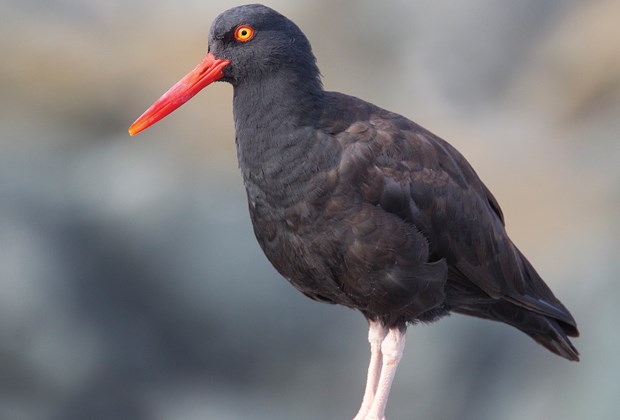Autumn on the North Shore is truly a wonderful time of year.
Big leaf maple tree leaves are turning to lovely gold and oranges, mushrooms are popping up in the woods and the birding is great.
Many of our summer birds - the neo-tropical species, like warblers, vireos, flycatchers, western tanagers and black-headed grosbeaks have headed back to their southern wintering grounds. Of course, it's always possible that a few will stay behind.
For example, the yellowrumped warbler, a hardy species, can even winter on the North Shore. Warblers are insect eaters but the yellow-rump also feeds on fruit. Fruit, like blackberries, keep a lot of birds fed, even when the fruit dries out. Seed predation like the purple finch is one of at least a dozen species I've seen feeding on dried out (mummified) fruit.
Autumn is when you should look for migrant birds from the North. Recently at the Conservation Area at Maplewood Flats, a cackling goose was sighted, a species that breeds in Alaska Ducks like American wigeon, green-winged teal, northern pintail, and mallard move in to spend the winter here. It's always fun to check carefully through the American wigeon for a rare Eurasian wigeon. The sides of the American wigeon's head are green; the Eurasian's are reddish brown making it easy to pick out from the other ducks.
Deep water ducks - the divers that have bred in the north of B.C.'s interior - gather in ever increasing numbers over the fall, including the surf scoter, Barrow's goldeneye, bufflehead, and longtailed duck. Three species of merganser should be looked for off Osprey Point - common, red-breasted and hooded. The hooded is also seen in fresh water ponds like the installed wetland at the Conservation Area at Maplewood Flats and at Ambleside. Mergansers (sometimes called "sawbills") are fisheating ducks, their serrated bills helping them to catch slippery prey.
Raptors like hawks, falcons and eagles are also on the move. The Conservation Area's beloved ospreys will migrate out heading for parts south like Mexico, Central America or beyond. Our hearts go with them and we look forward to seeing the ospreys return next spring. Raptors like the red-tail and Cooper's hawk can be seen hunting for prey at Maplewood. The red-tail is a buteo featuring a broad fan-shaped tail and broad rounded wings, making it a soaring hawk. The Cooper's, or "Coop," on the other hand, is an accipiter built for attack. Other hawks seen recently on the North Shore include the merlin, sharp-shinned hawk and peregrine falcon. An unusual and wonderful sighting on the September bird walk at the Conservation Area at Maplewood Flats was an American kestrel perched on a dolphin (wooden structure) offshore - not where one would expect to see a kestrel - but birds can fly.
Shorebirds have all but passed through our area, but a few spend the winter here and should be watched for, like the greater yellowlegs, and sanderling. Along the rocky shores you can watch for the black turnstone and the black oystercatcher. It is also a good habitat to look for the colourful harlequin duck feeding just offshore. Small crabs are a favourite food of "harlies" and other ducks too.
Small bird species and their numbers also change with the seasons. Fox sparrows return from their mountain breeding areas and local junco numbers build up. Bushtits and chickadees form their winter flocks, having split into breeding pairs for the summer. Male goldfinches have lost their bright golden plumage, and now look more like females. Other finches to be watched for include purple finch, house finches and pine siskin. Our native Pacific crab apple is a fruit appreciated by many birds - robins, thrushes, and finches including the lovely pine grosbeak.
Enjoy the fall; it's a most wonderful time of the year. Keep safe.
Al Grass is a naturalist with Wild Bird Trust of British Columbia, which offers free walks at The Conservation Area at Maplewood Flats on the second Saturday of every month. The next walk will be Saturday, Oct. 12 starting at 10 a.m., to seek out the birds that will be spending the fall season in the area. Meet at WBT's site office, 2645 Dollarton Hwy. (two kilometres east of the Iron Workers Second Narrows Memorial Crossing). Walks go rain or shine.



